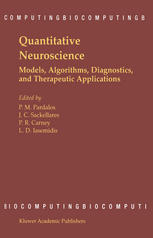

Most ebook files are in PDF format, so you can easily read them using various software such as Foxit Reader or directly on the Google Chrome browser.
Some ebook files are released by publishers in other formats such as .awz, .mobi, .epub, .fb2, etc. You may need to install specific software to read these formats on mobile/PC, such as Calibre.
Please read the tutorial at this link: https://ebookbell.com/faq
We offer FREE conversion to the popular formats you request; however, this may take some time. Therefore, right after payment, please email us, and we will try to provide the service as quickly as possible.
For some exceptional file formats or broken links (if any), please refrain from opening any disputes. Instead, email us first, and we will try to assist within a maximum of 6 hours.
EbookBell Team

4.7
106 reviewsAdvances in the field of signal processing, nonlinear dynamics, statistics, and optimization theory, combined with marked improvement in instrumenta tion and development of computers systems, have made it possible to apply the power of mathematics to the task of understanding the human brain. This verita ble revolution already has resulted in widespread availability of high resolution neuroimaging devices in clinical as well as research settings. Breakthroughs in functional imaging are not far behind. Mathematical tech niques developed for the study of complex nonlinear systems and chaos already are being used to explore the complex nonlinear dynamics of human brain phys iology. Global optimization is being applied to data mining expeditions in an effort to find knowledge in the vast amount of information being generated by neuroimaging and neurophysiological investigations. These breakthroughs in the ability to obtain, store and analyze large datasets offer, for the first time, exciting opportunities to explore the mechanisms underlying normal brain func tion as well as the affects of diseases such as epilepsy, sleep disorders, movement disorders, and cognitive disorders that affect millions of people every year. Ap plication of these powerful tools to the study of the human brain requires, by necessity, collaboration among scientists, engineers, neurobiologists and clini cians. Each discipline brings to the table unique knowledge, unique approaches to problem solving, and a unique language.